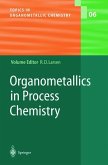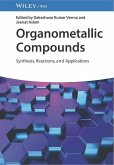Metal carbene complexes have made their way from organometallic curiosities to valuable reagents and catalysts. They offer novel synthetic opportunities in carbon-carbon bond formation based on either carbene-centered reactions or on metal-templated processes which makes them indispensable in modern synthetic methodology. The most prominent metal carbenes are now either commercially available or easy to synthesize and handle with modern laboratory techniques. This volume organized in eight chapters written by the leading scientists in the field illustrates the theoretical background, non-classical nucleophilic and cycloaddition patterns, chromium-templated benzannulation and photo-induced reactions, rhodium-catalyzed carbene transfer as well as the principles and applications of olefin metathesis which has coined the progress in synthetic methodology over the past decade. Designed for researchers in academia and industry as well as graduate students it presents the state-of-the-art potential of carbene complexes in modern organic synthesis.
From the reviews:
"This small volume is packed with valuable information. ... The virtue of this book lies in its voluminous data and complete referencing of the various topics presented. As such, it will be a useful source for researchers focused on particular targeted areas." (Jeffrey Schwartz, Journal of the American Chemical Society, Vol. 128 (21), 2006)
"This small volume is packed with valuable information. ... The virtue of this book lies in its voluminous data and complete referencing of the various topics presented. As such, it will be a useful source for researchers focused on particular targeted areas." (Jeffrey Schwartz, Journal of the American Chemical Society, Vol. 128 (21), 2006)








